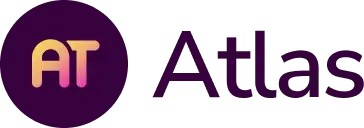by Jenny Windom, Rubicon International
From future careers to technology savviness to problem-solving skills, teaching students to code has a multitude of benefits. It’s no surprise that we’re hearing more about coding curriculum and coding activities in classrooms across the world. But, jumping right into teaching coding can be daunting. As educators, you might have some coding savvy, but what if you wanted to bring computer science and coding into your classroom sans background experience?
For those of you unsure of the difference between a bit and a byte—or if hearing “Java” only reminds you of your morning cup of liquid energy—coding may seem like an impenetrable fortress. Maybe you feel we should introduce code to students because our world relies more and more on the skills of coders and programmers but are unsure of how to teach or even explain it to your students. In this post, we hope to familiarize you with some background information about code and show you first steps in engaging your students in coding and computer science thinking quickly and easily in the classroom.
What is Code?
Humans use different languages to communicate with one another: computers are no different! Software (the programs we use) and hardware (the machines we run programs on) communicate through binary. Binary is technology’s most fundamental level of communication; it’s a series of 0’s and 1’s that tell the machine what to do and when to do it. Because humans have a difficult time communicating in binary, we’ve developed a language that does that for us: code.
There are lots of different coding languages. Some, like Java, CSS, HTML, and Python, you may have heard of. Others, like Oz, Ruby, Joy, and Scratch, you may not. These languages are continuously being updated as technology progresses, like our spoken language continues to evolve as we use it.
Teaching Coding with Computer Science Education
Tips and Tricks for Coding Activities
1. Be a Student again!
2. Don’t spend a dime!
There are more programs, apps, and websites than we could ever list here that could help you bring coding into the classroom. Because of that, you shouldn’t have to spend extra money on the tools you bring into the classroom unless you absolutely want to. Here are a few options:
- Code Academy → A website that has a variety coding languages. There are lessons and class sequences for all levels.
- Code Combat → A student-oriented program that allows kids to feel like they’re playing a video game as they’re learning code.
- Code Monster → A website designed to provide younger students with exposure to code.
- Hopscotch → Looking for an app? Hopscotch is a great app for kids to learn to code and make games.
3. Use the buddy system.
4. Take it offline.
Unable to connect to the internet at all? With a bit of front-loaded work, you can completely avoid the bandwidth issue. As we mentioned earlier, coding is a subsection of computer science education. Why not spend time focusing on ideas, concepts, and process behind coding to provide more context? You can have students use other mediums to show how coding essentially is a list of objectives and logic statements for a computer. Code.org has great resources and lesson plans that take vocabulary and concepts from coding and computer science without needing the technology. Some highlights?
- A lesson combining relay races with the idea of debugging a program
- Having students think about their digital footprint and how to stay safe while online
- An excuse to make paper planes in class…and learn about algorithms!

